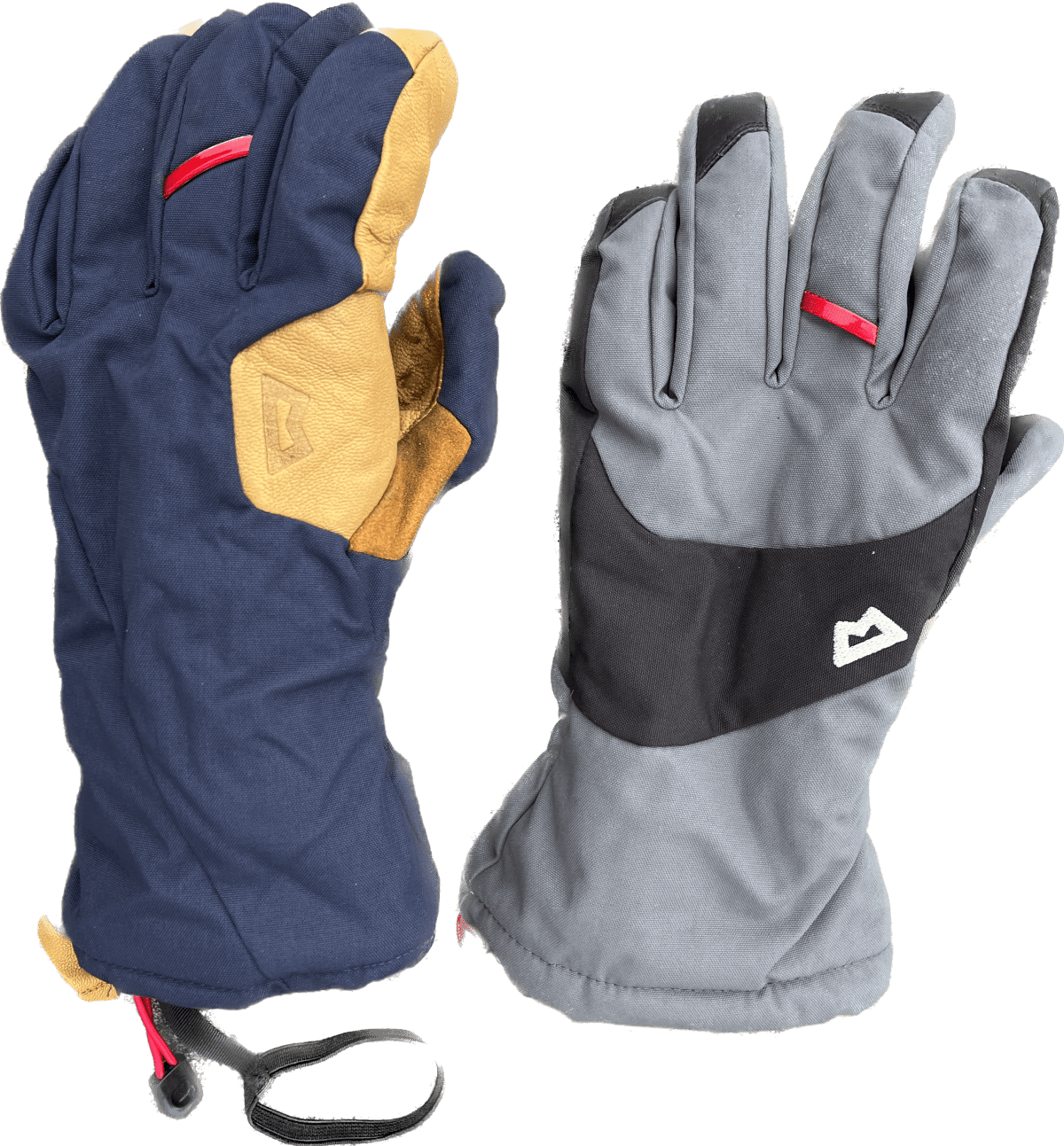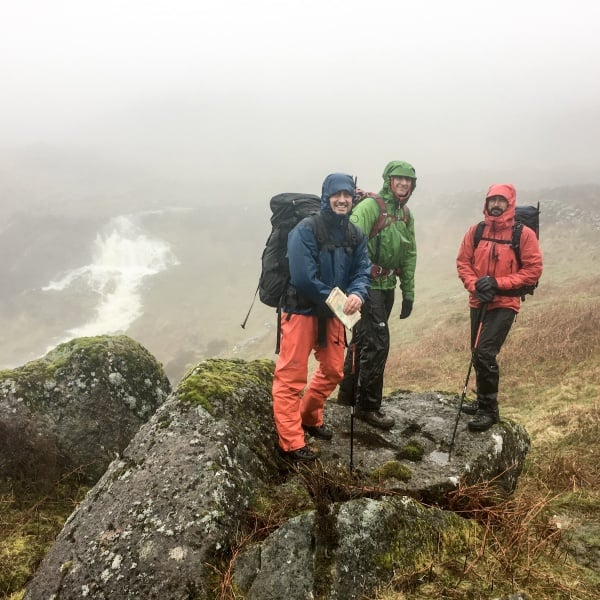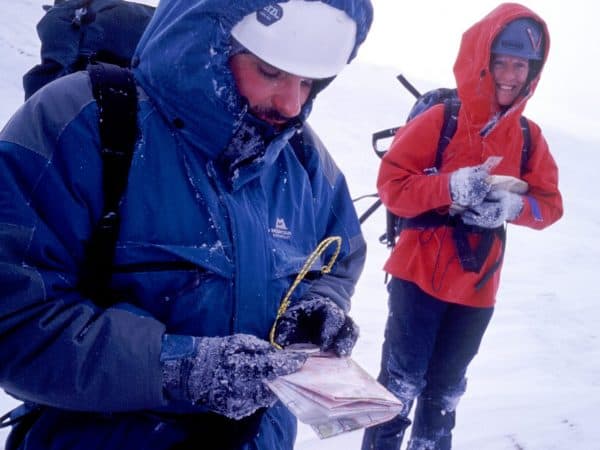The clocks have gone back and suddenly the outdoors feels a little bit more intimidating. It’s colder, the winds bite more fiercely and of course it gets dark earlier and earlier as we approach the winter solstice.
But with careful planning and packing we can continue to safely enjoy the moors, hills and mountains right through the winter months.
Here are Alex’s tips for safer hill walking and trekking in the Darker Months of November to April.
Boots and Gaiters
Consider updating the waterproofing of your footwear by waxing your leather boots or spraying your synthetics in preparation for wetter walking conditions. The lightweight boots I’ve been tromping about in over the summer are definitely not waterproof and they can feel insecure on wet and muddy steep terrain. Wear a good quality three season hill walking boot. A beefier boot with a durable waterproof outer can help keep your feet warmer. Go for a Chucky vibram sole. Gaiters will keep your feet dryer for longer.
Waterproofs
I like a longer thicker hard shell waterproof jacket for winter hill walking. A good hood is essential. Over trousers with braces are comfier for all day use. I’ll be packing my Patagonia Triolet, it’s cut to fit over insulation layers and has a great hood. The Mountain Equipment Lhotse jacket is another good choice, it’s a well fitting Gore-tex jacket with a superb hood.
Gloves
In winter always carry at least two of pairs of gloves. A thin stretchy fleece glove for lower down and then some good quality warmer gloves for the hill and mountain tops. Mountain Equipment Guide Gloves are good all round gloves that live in my pack throughout the colder months. Hati is a big fan of the Alpkit Gabbros. In bad weather I’ll definitely carry a third thick pair of gloves or even mitts to wear if the others get wet.

Mountain Equipment Guide Gloves
Hats
A wooly hat or beanie is a vital addition to your kit in cold and windy conditions. A buff a great as a neck warmer but also good as a lighter weight hat or head band.
Flask
A hot drink is a nice morale booster for winter walking. I’ve been using an excellent Klean Kanteen TKPro; it’s the most durable flask i’ve used . Another option is to carry a compact stove that is wind resistant and boils very quickly. Just make sure you don’t sit around too long getting cold waiting for your stove to boil. The MSR Reactor is excellent, very very fast boiling and very wind resistant.

Klean Kanteen TKPro
Head torch
An absolutely essential addition to your pack in winter. Make sure you have spare batteries (or carry a separate battery pack for on the hill recharging). I use a Petzl Actik. I keep it in a small dry bag with the spare batteries in a small ziplock bag. Another popular brand is Alpkit.
Spare Map and Compass
Maps blow away and compasses break or malfunction. Carry spares. The BMC Mountain Maps are light and waterproof and cover a wider area than most Ordnance Survey maps and consequently make excellent spare maps that can live in the bottom of your pack just in case your main map blows away.
Fully charged phone and separate battery pack
It’s essential to keep some charge in your phone in case you need to call for help. Preserve the battery on the hill by switching to airplane mode and resist the temptation to constantly use it for navigation. A battery pack like the Alpkit Boost is a very wise investment. Also download the OS Locate app.
Belay Jacket
The term comes from winter climbing where a synthetically insulated jacket is carried for the climber to wear while belaying. These types of jacket are great for walking too. The great thing about them is that you can wear it over the top of your waterproofs if you stop for a break. Also very useful if you need to wait for help or are static for long periods. The Patagonia Das Parka is a good quality example. This winter the Beyond the Edge team are using Mountain Equipment Oreus jackets.

Oli in his Patagonia DAS
Group Shelter
Another essential. None of the Beyond the Edge instructors would consider going out without one. A life saver in an emergency and very cosy for a lunch break in bad wether. Rab make some good lightweight versions and the Alpkit shelters are good value for money. Go for a 4-6 person version as a minimum size, the smaller ones are a bit too cramped for everyday use.
Pack
A bigger pack will enable you carry these extra bits of kit and it will be easier to reach down inside and find your waterproof or belay jacket. Consider 35L + as a minimum. If you’re considering getting into winter mountaineering 40 + will be a better choice.
Trekking Poles
One or two trekking poles will aid stability in windy conditions. I’ll take one for day walks but two if I’m carrying a heavier load or walking in icy or snowy conditions. Also good for probing boggy sections. Outside in Hathersage offer a great range.
Training
If you’re unsure of your abilities or are lacking confidence in your navigational skills then consider getting some expert help. A navigation course or a hill or mountain skills weekend can really boost your abilities and enable more ambitious ventures.
Hill and Mountain Skills Courses
If you would like some winter training delivered by friendly, highly qualified and experienced instructors then have a look at our Scotland based winter skills courses here https://www.beyondtheedge.co.uk/winter-walking-skills/
Alex
Beyond the Edge Ltd is based in the Peak District, easily reached by train from London and within easy travelling distance from Sheffield, Manchester, Leeds, Nottingham and other Northern towns and cities.
We are one of the UKs most experienced providers of climbing, walking, scrambling, mountaineering and navigation training courses.
Most of our courses are run in the Peak District National Park which has some of the finest rock climbing, bouldering, walking and hiking in the world.





